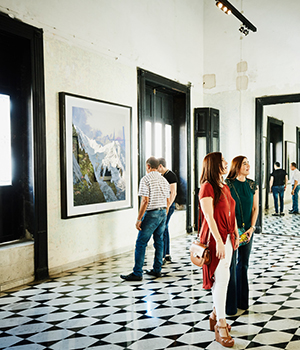1 Museum curators are also often tasked with sitting on the board of their museum; interviewing and hiring staff; acquiring, authenticating and cataloging new works and artifacts; conducting research and producing scholarly reports; restoring and conserving items in the collection; accessioning (or deaccessioning) works; and designing exhibitions that will add to and expand how academia and the public think about art.
2 Carrying costs that museums cover typically include transportation, mounting, security, storage, and property and casualty insurance. They don’t usually include cleaning or restoration, as these actions are often expressly forbidden under the written loan agreement, unless extraordinary circumstances require the museum to act to save a piece on loan from destruction.
3 In the U.S., art collectors cannot deduct any of the expenses associated with maintaining their art collection.
4 For purposes of this paper, the term “art world elite” is meant to include, but is not limited to, major collectors, art historians, art scholars, museum curators, major auction houses, famous living artists and art journalists.
5 Samuel McIlhagga, “What Collectors Need to Know about Art Shipping,” Artsy, Jan. 4, 2022.
6 Art Loan Contract, Organization of American States, Art Museum of the Americas.
7 “Loans to Museums for Indefinite or Long Terms,” California Civil Code, Section 1899.10, Chapter 1.5, 2022.
8 “Valuation of household and personal effects,” Code of Federal Regulations, Section 20.2031-6, Internal Revenue Service, Department of the Treasury, 2021.
9 Under IRC Section 2105(c) and Treas. Reg. § 20.2105-1(b), works of art owned by a decedent who was a nonresident not a citizen of the United States shall not be deemed property within the United States if the works of art are (1) imported into the United States solely for exhibition purposes, (2) loaned for that purpose to a public gallery or museum, no part of the net earnings of which inures to the benefit of any private stockholder or individual, and (3) at the time of the death of the owner, on exhibition, or en route to or from exhibition, in the public gallery or museum.
The article was authored by Michael Duffy, Managing Director, Wealth Strategist, Head of Art Planning, Merrill and is provided for informational and educational purposes only. The opinions, assumptions, estimates and views expressed are those of the author, and are, as of the date of this publication, subject to change, and do not necessarily reflect the opinions and views of Bank of America Corporation or any of its affiliates. The information does not constitute advice for making any investment decision or its tax consequences and is not intended as a recommendation, offer or solicitation for the purchase or sale of any investment product or service. Before acting on the information provided, you should consider suitability for your circumstances and, if necessary, seek professional advice.
Nonfinancial assets, such as closely held businesses, real estate, fine art, oil, gas and mineral properties, and timber, farm and ranch land, are complex in nature and involve risks including total loss of value. Special risk considerations include natural events (for example, earthquakes or fires), complex tax considerations and lack of liquidity. Nonfinancial assets are not suitable for all investors. Always consult your independent attorney, tax advisor, investment manager and insurance agent for final recommendations and before changing or implementing any financial, tax or estate planning strategy.



